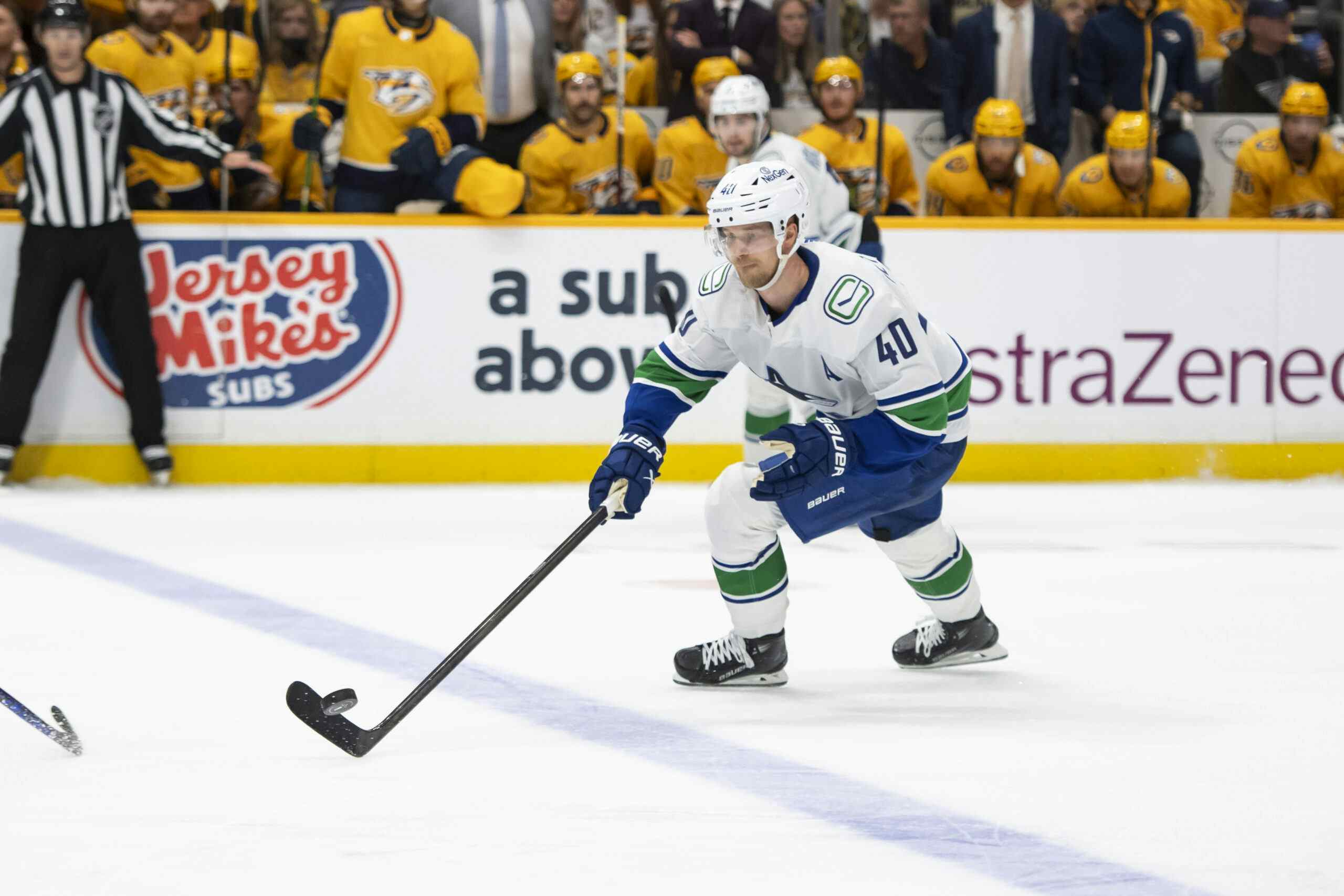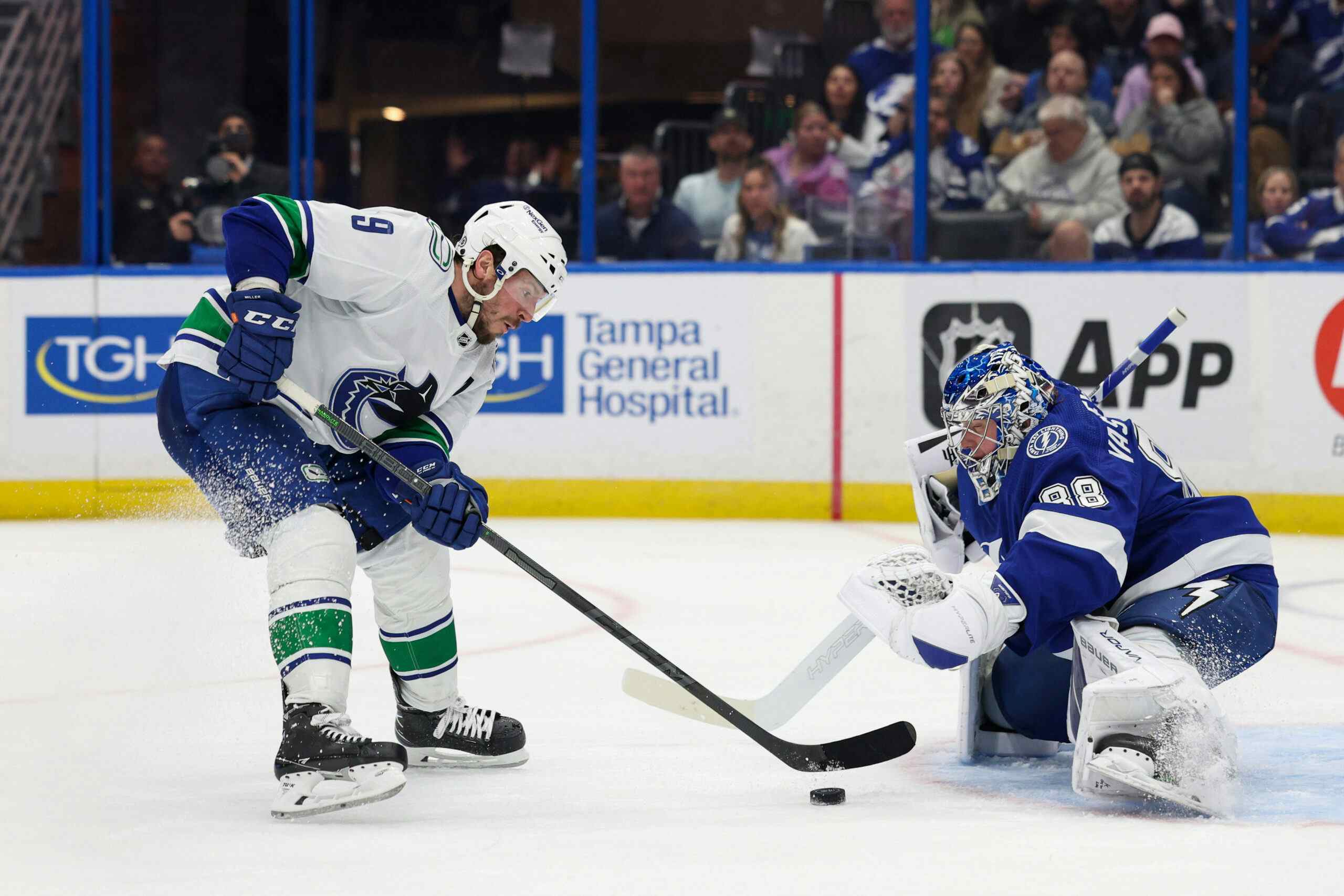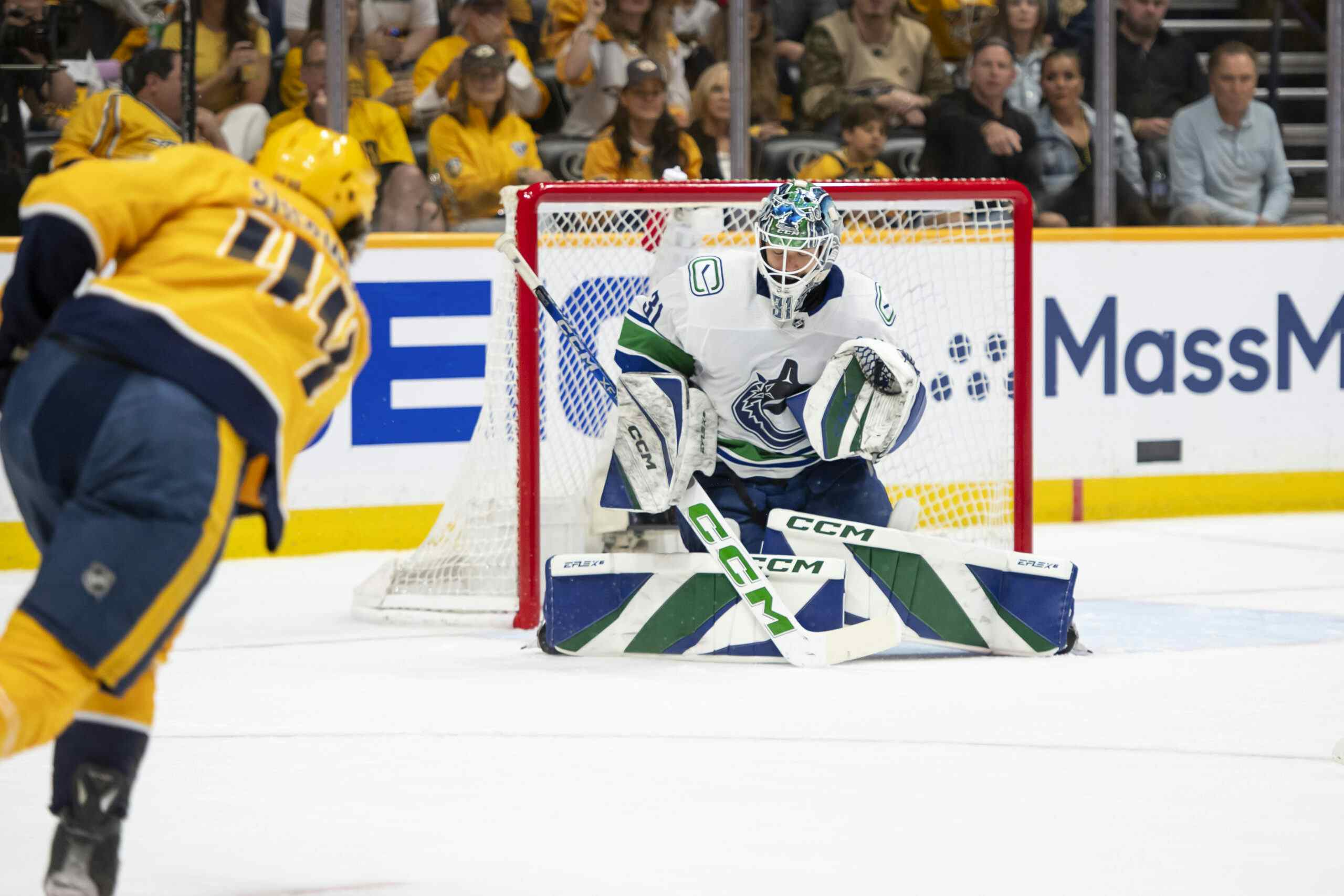Canucks Light That Doobie Right Up: Recap and Chance Data

Photo Credit: Andy Devlin/Getty Images.
In his post on player usage this afternoon, Thomas Drance alluded to #trapitup, which has become a staple on Twitter during Canucks games this season. Fans of the team have complained about how the team has been playing a boring brand of hockey; as a result, Alain Vigneault’s head on a stick is the only reasonable course of action, obviously.
It’s awfully difficult to voice those complaints after Monday night’s thrilling 3-2 overtime victory over the upstart Edmonton Oilers, though. Maybe now we’ll have to get back to last season’s #fliptheswitch.
Read on Past the Jump for the Scoring Chances, and Analysis.
I took a ton of notes all throughout the opening 20 minutes, but they seem rather irrelevant now. Not too much went right for the Canucks to start the game. Everything they were getting was being contained to the outside, making Devan Dubnyk’s life easy. The Sedins spent what seemed like an eternity on one particular shift hemmed in their own zone against Edmonton’s top line of Nugent-Hopkins, Hall, and Eberle. They were fairly fortune to come away from that experience without a goal against. But then, sure enough, a lucky bounce for the Oilers on a flubbed Yakupov chip-in (compounded by a lazy effort by Garrison, who was caught flat-footed) resulted in a power play goal. The Oilers won the chance battle by a margin of 8-3 in the opening frame, and it honestly seemed like it should have been worse.
Things started to teeter roughly halfway through the 2nd, after an absolutely dreadful comedy of errors by Edler and Bieksa resulted in a shorthanded goal for the Oilers to make it 2-0. The only person who understood what they were going through was Jason Garrison, because taking care of the puck in your own zone is so last season. I wasn’t particularly optimistic at the time, but I’ve got to give the Canucks credit for the effort they showed when it would have been fairly easy to pack it in.
Burrows was re-attached to the hip of the Sedins in the second frame (ironically enough, I thought Kassian was the best Canuck skater in the 1st period), and it wound up paying dividends in a big way. The twins combined to create 8 scoring chances on the night, and were back to their old dominant selves in the 2nd half of this game. The passing to set up the eventual game winner was classic Sedinery.
Hansen and Schroeder created quite the garbage goal to bring the Canucks back into it; it was kind of a ‘sure, why not’ shot by Hansen from a terrible angle. But they all count the same. And I appreciated the speed and tenacity that they displayed to put themselves in that position.
Flashforward to the final minutes of the game, where Kevin Bieksa tied it up on yet another questionable goal. Good luck trying to get Mason Raymond to admit that he didn’t intend to hit Bieksa with whatever you want to call what he did. Despite the title of this post (we pride ourselves on word play here at The Army) I actually feel bad for Dubnyk, who played a heck of a game. He made a ton of quality saves, yet the two that got by him in regulation weren’t even considered scoring chances by our standards.
In overtime, Luongo stopped a Hall penalty shot rather effortlessly. At the time, I considered it as a good warmup for what seemed to be an inevitable shootout. But then, Chris Tanev happened. Stats geeks all over Vancouver rejoiced, and so did the Canucks. Quite the enigmatic celebration ensued.
There still surely are issues that need to be resolved, but for now we can enjoy this one.
Scoring Chance Data
A reminder for those of you new to reading our site: a scoring chance is counted any time a team directs a shot cleanly on-net from within home-plate (here’s an image of "home-plate" so you can get a visual definition). Shots on goal and misses are counted, but blocked shots are not (unless the player who blocks the shot is “acting like a goaltender”). Generally speaking, we are more generous with the boundaries of home-plate if there is dangerous puck movement immediately preceding the scoring chance, or if the scoring chance is screened.
Here’s the total scoring chance data:

And here’s the individual chance data for the Canucks skaters:

Fun With Numbers
1: In his 73rd NHL game, Chris Tanev finally got his first goal. I’m pretty sure the wait was worth it, too.
2: The Canucks have had quite adventure trying to hold 2-goal leads this season. On three separate occasions they’ve blown a lead of that variety, so it was refreshing to see them turn the tables on their opponent. Especially after the Oilers did the same thing to them back in the 2nd game of the season.
70: Last week, I wrote about the woes the Canucks have had in the faceoff circle this season. What woes? They were 44/63 on draws in this one, for a 70% winning percentage. Burrows didn’t lose any, Malhotra and Henrik were dominant, and hey, even Max Lapierre won half of the ones he took. Progress.
Recent articles from Dimitri Filipovic





